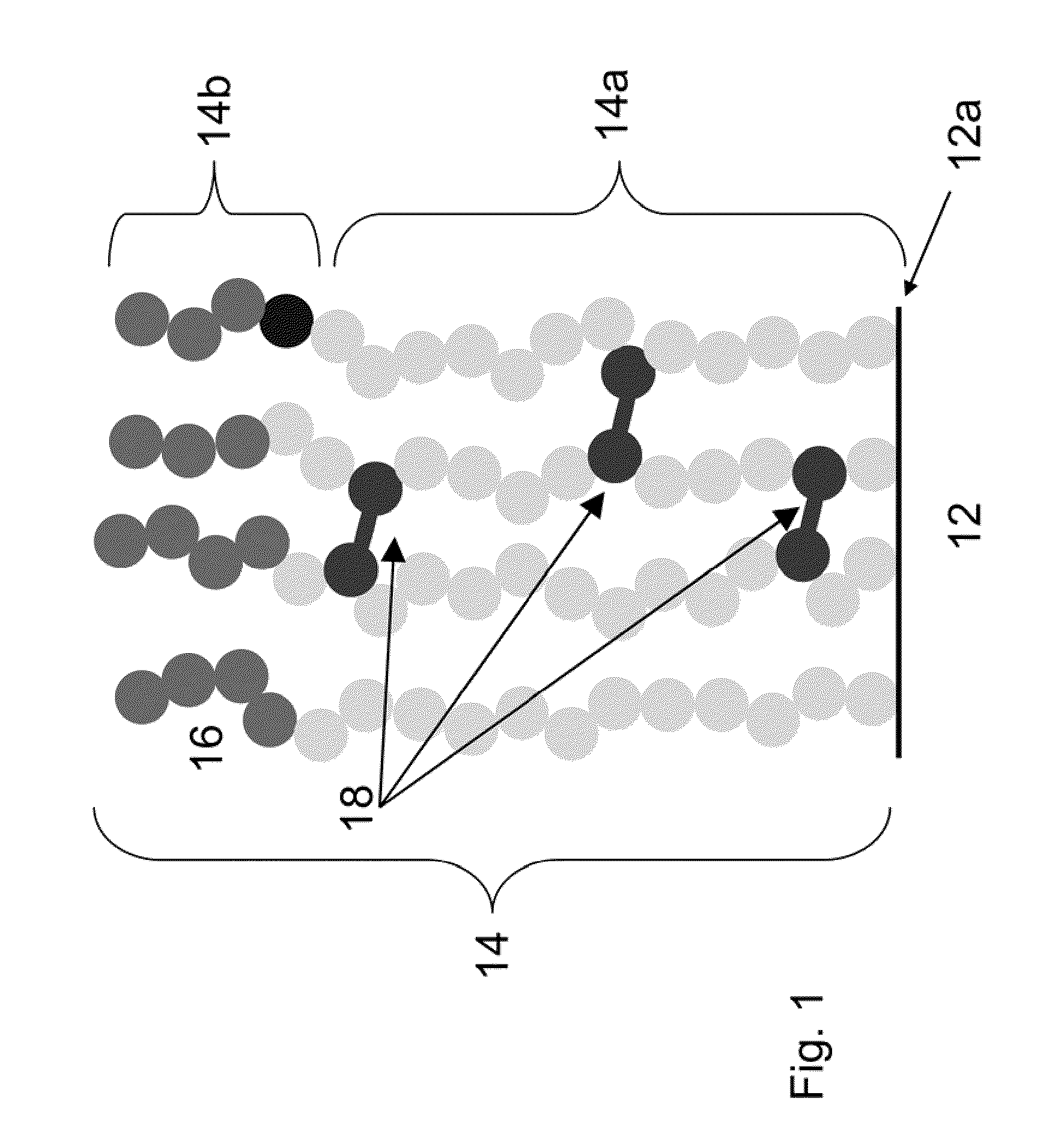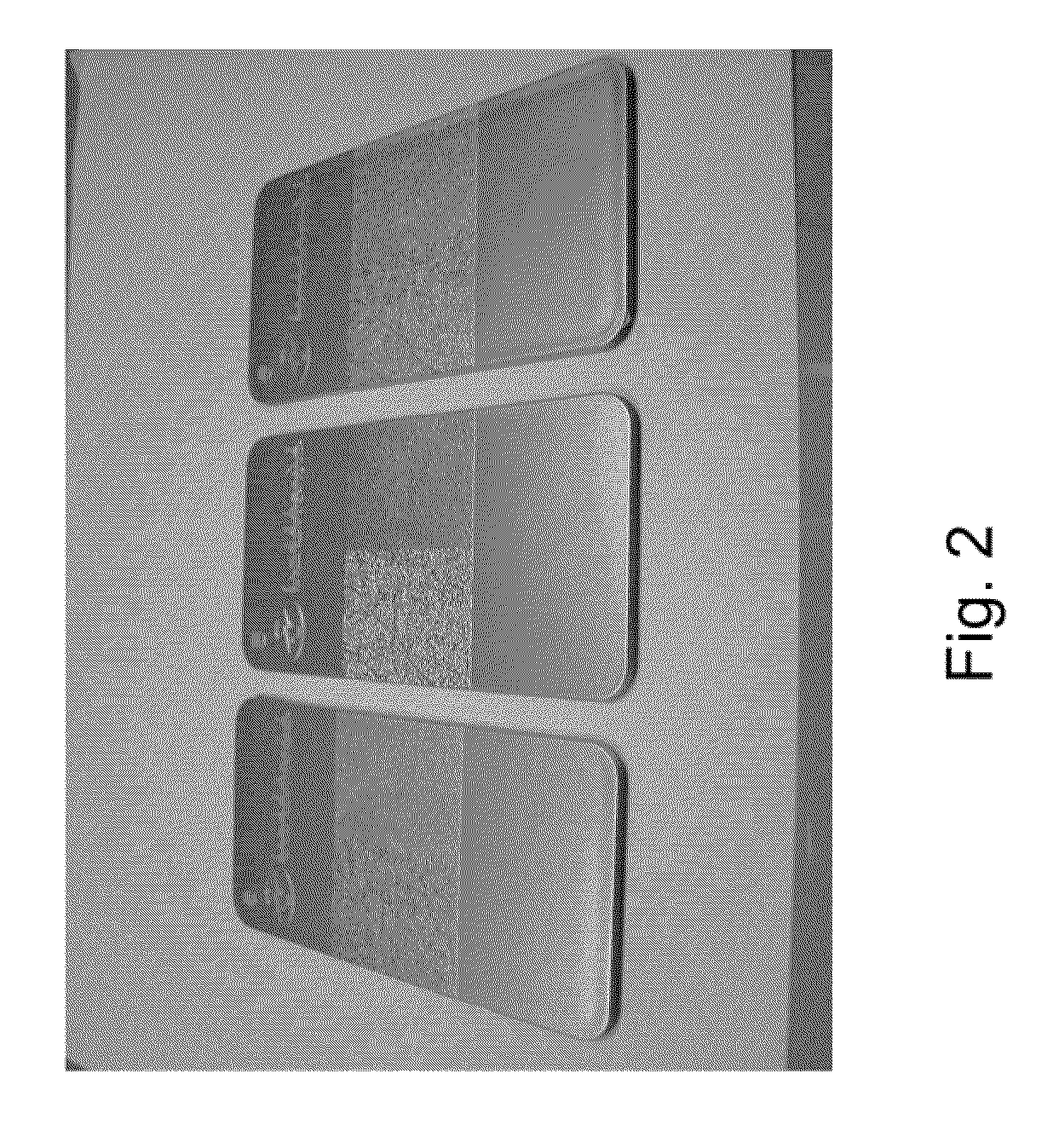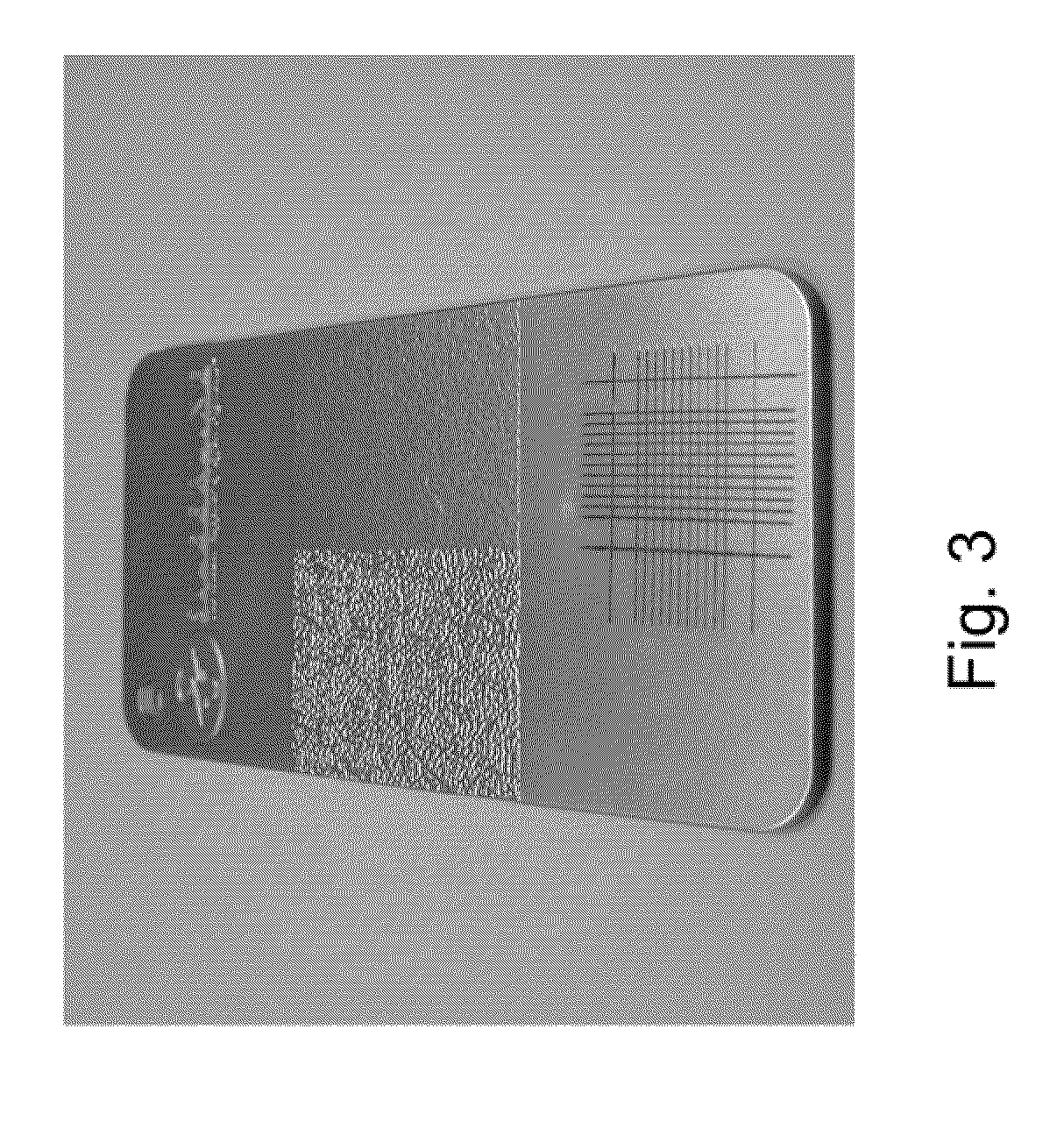Film-forming pigments and coating system including the same
- Summary
- Abstract
- Description
- Claims
- Application Information
AI Technical Summary
Benefits of technology
Problems solved by technology
Method used
Image
Examples
example 1
Preparation of Polystyrene Coated Al Pigment
[0056]480 g aluminum paste (Silberline Sparkle Silver® Premium 695, 75.28% nonvolatile), 1200 mL toluene, and 3 mL 3-(trimethoxysilylpropyl)-2-bromo-2-methylpropionate were added to a 2 L reaction flask equipped with a mechanic stirrer and a condenser. The reaction mixture was heated up and was kept under reflux for 24 hours. Once the reaction time was complete, the mixture was cooled down to room temperature. The flakes were vacuum filtered. Two washes of toluene were applied.
32.3 g initiator modified Al paste (containing 20 g of nonvolatile), 0.423 g CuBr, 200 mL Styrene, and 190 mL PM Acetate were added to a 500 mL reaction flask equipped with a mechanical stirrer and a heating mantle: The solution was degassed with nitrogen and heated to 80° C. under constant stirring. In a separated flask, pentamethyldiethylenetriamine (PMDETA) was degassed with nitrogen for 30 min. Then 0.83 mL of degassed PMDETA was transferred to the reaction flask...
example 2
Resin-Less Paint of Polystyrene Coated Al from Example 1
[0057]Resin-less paint of pigment made in Example 1 was prepared by diluting wet paste with PM acetate. The final paint has pigment weight concentration of 10.1%. Paint was siphon sprayed onto the plastic panel of polystyrene, poly(methyl methacrylate) and acrylonitrile butadiene styrene (ABS). The sprayed panel was further dried in oven.
example 3
Preparation of poly(methyl methacrylate) Coated Al Pigment
[0058]4.8 kg aluminum paste (Silberline Sparkle Silver® Premium 695, 75.68% nonvolatile), 12 L PM acetate, and 16 mL 3-(trimethoxysilylpropyl)-2-bromo-2-methylpropionate were added to a 20 L reaction flask equipped with a mechanic stirrer and a condenser. The reaction mixture was heated up and was kept under reflux for 6 hours. Once the reaction time was complete, the mixture was cooled down to room temperature. The flakes were vacuum filtered. Two washes of PM acetate were applied.
61.6 g initiator modified Al paste (containing 40 g of nonvolatile), 0.106 g CuBr, 200 mL methyl methacrylate, and 180 mL PM Acetate were added to a 500 mL reaction flask equipped with a mechanical stirrer and a heating mantle: The solution was degassed with argon and heated to 80° C. under constant stirring. In a separated flask, pentamethyldiethylenetriamine (PMDETA) was degassed with argon for 30 min. Then 0.16 mL of degassed PMDETA was transfer...
PUM
| Property | Measurement | Unit |
|---|---|---|
| Fraction | aaaaa | aaaaa |
| Thickness | aaaaa | aaaaa |
| Ratio | aaaaa | aaaaa |
Abstract
Description
Claims
Application Information
 Login to View More
Login to View More - R&D
- Intellectual Property
- Life Sciences
- Materials
- Tech Scout
- Unparalleled Data Quality
- Higher Quality Content
- 60% Fewer Hallucinations
Browse by: Latest US Patents, China's latest patents, Technical Efficacy Thesaurus, Application Domain, Technology Topic, Popular Technical Reports.
© 2025 PatSnap. All rights reserved.Legal|Privacy policy|Modern Slavery Act Transparency Statement|Sitemap|About US| Contact US: help@patsnap.com



